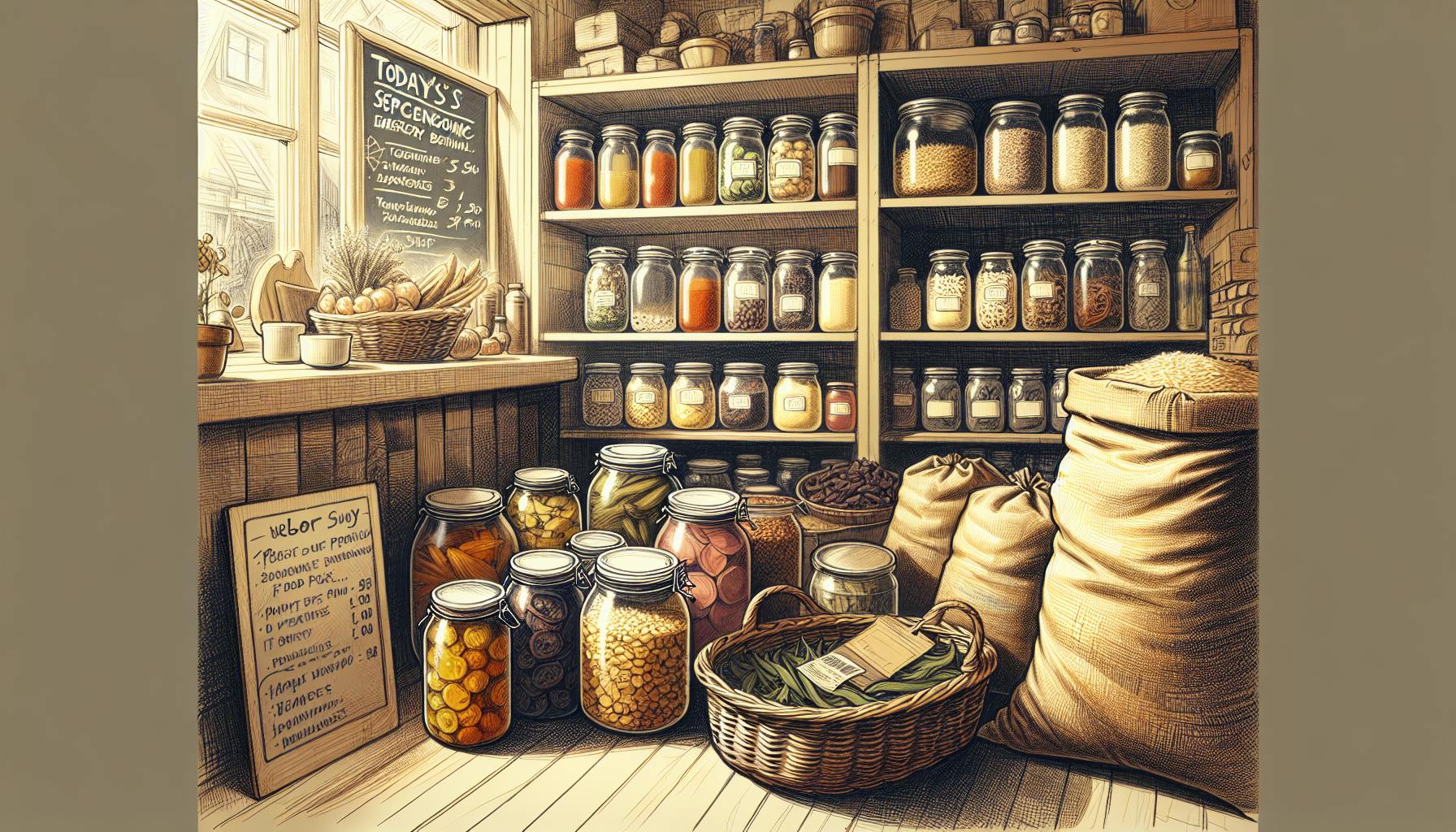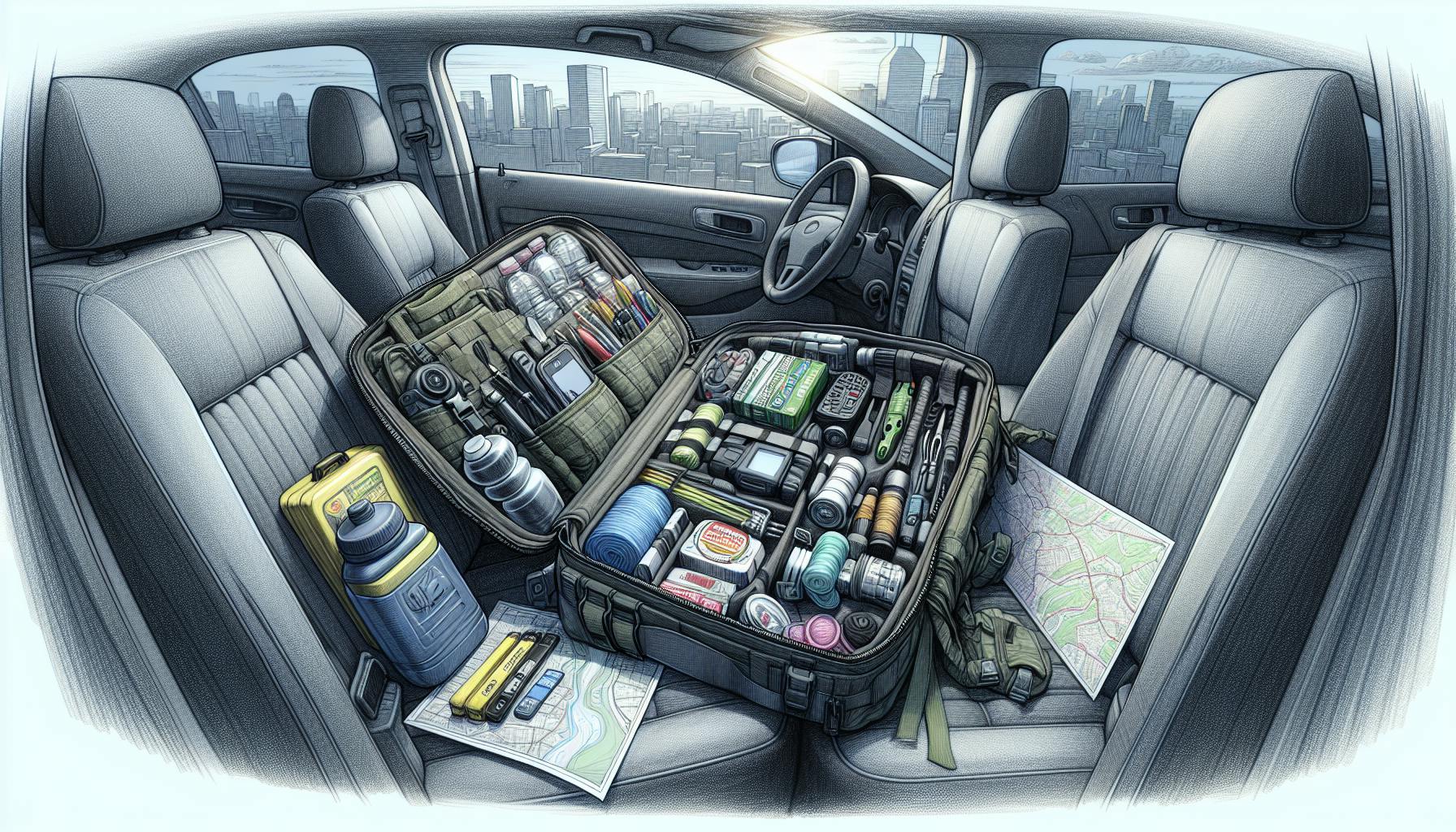Introduction
With rising global instability from events like the COVID-19 pandemic, Russia's invasion of Ukraine, and climate change-fueled natural disasters, being prepared with quality survival and prepping gear is more crucial than ever before in modern history. Recent supply chain disruptions triggering shortages of essential goods combined with increasing geopolitical tensions demonstrate the growing need for individuals and families to become more self-reliant. This introductory guide aims to walk beginners through the must-have survival and prepping gear essentials. We'll provide recommendations on versatile items that can be lifesavers in various emergency scenarios, allowing you to meet basic needs even if infrastructure and utilities fail.
Categorizing Survival Gear Priorities
When building an emergency supply, it helps to think of gear in terms of core categories based on the most vital human needs in a crisis. These include:
- Shelter - tents (Coleman, ALPS Mountaineering), tarps (Blue Wave, Aqua Quest), sleeping bags (TETON Sports, Hyke & Byke)
- Water - filtration (Sawyer Squeeze, Lifestraw, Platypus GravityWorks), purification tablets (Potable Aqua), storage containers (Reliance Aqua-Tainer, Sceptre water cans)
- Food - MREs (X MRE, Sure-Pak), protein bars (Datrex, SOS), canned goods (Mountain House, Wise Company), freeze-dried fruits/vegetables (Mountain House, Wise Company)
- First Aid - trauma kits (Everlit, Be Smart Get Prepared), ointments (Neosporin, Bacitracin), medications, quick clot gauze, tourniquets (Recon Medical, North American Rescue)
- Lighting - flashlights (Streamlight, Maglite), headlamps (Black Diamond, BioLite), candles (UCO, Jarlyn)
- Tools - knives (Morakniv, Gerber, Benchmade), fire starters (UST, Ultimate Survival Technologies), paracord (Paracord Planet, Titan), radios (Midland, DeWalt)
Each category plays a critical role in preparedness. Having quality gear in each allows you to meet basic needs for survival if cut off from utilities and supply chains. Certain items also serve multiple categories, like a tarp providing both shelter and water collection.
Must-Have Survival Shelter Essentials
Being able to create even basic shelters is essential for protection from the elements. Recommended items include:
-
Multi-person tents - Look for durable, waterproof fabrics from brands like Coleman or ALPS Mountaineering. Models with vestibules to store gear are useful.
-
Heavy duty tarps - Brands like Blue Wave and Aqua Quest make tarpaulins resistant to punctures. These can be configured into shelters and also used to collect rainwater.
-
Warm sleeping bags - Temperature ratings are key. A 20°F bag like the TETON Sports Mammoth provides versatility for most climates. Mummy bags like the Hyke & Byke 15°F retain more warmth.
Water Filtration and Purification Fundamentals
Access to clean drinking water is arguably the most critical survival need. Options to treat water include:
-
Portable water filters - These pump-style filters from Sawyer and Lifestraw remove bacteria and particulates. Gravity filters like the Platypus GravityWorks are also reliable.
-
Water purification tablets - Lightweight tablets like Potable Aqua kill viruses and bacteria. Easy to pack but slower to treat water.
-
Durable water containers - Steel bottles or collapsible bags from brands like Reliance Aqua-Tainer and Sceptre allow for boiling, carrying, and storing water. Look for BPA-free.
Food and Sustenance to Maintain Strength
Stocking compact, non-perishable foods provides sustenance when utilities are disrupted:
-
Protein/granola bars - High in calories and nutrients. Look for soft textures easier to chew if dental issues. Clif Bar, Kind Bars, and Datrex are quality choices.
-
MREs - Self-contained meals ready-to-eat like XMRE and Sure-Pak have a long shelf life of 5+ years. Can be heated with included stove.
-
Canned goods - Fruits, vegetables, beans, and meats from Mountain House, Wise Company, and other brands last 2-5 years. Pull-top lids eliminate need for openers.
-
Freeze dried fruits/vegetables - Lightweight with a long shelf life but require water to reconstitute. Try brands like Mountain House and Wise Company.
-
Comfort foods - Adding coffee, candy, spices lifts mood and motivation.
First Aid Knowledge and Supplies
First aid allows treatment of injuries without professional medical care. Recommended items include:
-
Adhesive bandages - Multiple sizes, heavy duty, waterproof options.
-
Gauze rolls - Control bleeding and dress wounds.
-
Antibiotic ointment - Prevents infection in cuts and abrasions. Try Neosporin or Bacitracin.
-
Medical gloves - Nitrile gloves reduce disease transmission.
-
Trauma shears - Cut away clothing and dressings. Raptor shears are a top option.
-
Quick clot gauze - Quickly stops bleeding from major wounds. Brands like Celox and QuikClot are proven.
-
Tourniquets - Recon Medical and North American Rescue make quality tourniquets to stop extremity bleeding.
YouTube first aid videos provide visual training on skills like wound care, splinting, CPR, and more.
Essential Tools and Gear for Defense and Utility
Beyond basic needs, functional tools enable you to improvise solutions:
-
Fixed blade knife - Far more resilient than folding knives. Morakniv, Gerber, and Benchmade make durable options. A full tang provides strength.
-
Fire starting tools - Waterproof stormproof matches, magnesium fire starters from UST and Ultimate Survival technologies are reliable. Have redundancy.
-
Paracord - Brands like Paracord Planet and Titan make sturdy rope for securing gear, building shelters, trapping food. Look for >550 lb test strength.
-
Emergency radio - Crank or solar powered AM/FM/NOAA radios from Midland and DeWalt provide weather alerts without batteries. Can charge devices.
-
Pepper spray - Non-lethal self defense. Sabre and Fox Labs make quality pepper spray with 10-20 foot range and >1 million SHU.
Fire Starting Ability Using Various Methods
-
Matches - Cheap, reliable option. Coat ends in wax to waterproof. Store in waterproof case. UCO Stormproof matches are recommended.
-
Lighters - Convenient and easy if fuel remains. Long-term storage is difficult.
-
Flint/Steel kits - Creates sparks to ignite tinder. Takes practice but no fuel needed.
-
Magnesium fire starter - Shavings catch sparks easily. Burns hot to overcome damp conditions.
-
Tinder - Dryer lint, wax-coated cotton balls, wood shavings help ignite kindling.
Multi-use Gear to Improvise and Adapt
Creative items allow adapting supplies for unforeseen needs:
-
Duct tape - Can repair gear, seal injuries, collect water, and more. Gorilla Tape is extra strong.
-
Carabiners - Lightweight clips from Nite Ize and Mad Rock securely fasten gear. Aid in climbing and building shelters.
-
Zip ties - Affix tarps for shelter, fasten splints, and make quick repairs. Look for UV-resistant plastic.
-
Multitool - Pliers, screwdrivers, scissors in one device like a Leatherman Wave+. Get one with 12+ functions.
Light Sources When Electricity Fails
-
LED flashlights - Streamlight, Maglite, and other brands make durable lights with focused beam. Strobe can signal for help.
-
Headlamps - Black Diamond and BioLite headlamps allow handsfree work. Red light preserves night vision.
-
Candles - Provide localized light. Store matches with them. UCO and Jarlyn make quality emergency candles.
-
Lanterns - Coleman and Goal Zero offer portable LED and propane lanterns to illuminate rooms.
Self-Defense Items If Safety Is Threatened
-
Pepper spray - Sabre Red and Fox Labs spray temporarily incapacitates attackers up to 20 feet away.
-
Walking sticks - Study sticks like the Monkii Cane can deter animals and humans if needed.
-
Aluminum baseball bat - Lightweight Easton bats are strong for self defense if confronted by attackers.
-
Avoid firearms without proper permits/training to prevent liability issues.
Emergency Communications and Staying Informed
-
Crank radios - Etón and RunningSnail models provide weather alerts, news without batteries. Can charge devices.
-
Walkie talkies - Motorola Talkabout T800 provides short 2-3 mile communication. Let groups communicate locally.
-
Paper maps - GPS fails if electronics disrupted. Have detailed state and regional road maps.
-
Reference books - Survival manuals, first aid references, plant ID guides.
Building a Functional and Portable Survival Kit
Now that we've covered gear recommendations in each essential category, it's time to put it all together into a consolidated, grab-and-go survival kit. Carefully considering weight, space, organization, and ease of transport will ensure your kit provides what you need in an emergency. Breaking gear into modular bags or cases helps allocate specific functions while keeping items readily accessible.
Choosing Quality Containers and Bags
-
Hard cases - Pelican cases protect fragile items like electronics and lenses. Pick with o-ring seals.
-
Dry bags - Brands like SealLine make durable vinyl bags to waterproof clothes, food, first aid.
-
Organizer pouches - Maxpedition packs keep similar items like lighting or firegear together.
-
Label all containers - Ensure you know what's inside without opening.
Stocking Supplies for Short and Long Term Needs
-
Immediate use - 3-5 days of food, water, first aid, etc.
-
Restock reserves - Gradually build 1-3 month supply as budget allows.
-
Take inventory every 6 months - Check conditions and rotate stock.
Customizing Gear for Climate, Location, and Scenarios
-
Cold weather - Insulated boots, heavy jackets, gloves, wool socks.
-
Desert - Electrolyte tablets, sun hats, shade tarps, extra water.
-
Earthquake kit - First aid, radio, food and water to shelter in place.
-
Tornado supplies - Weather radio, helmet, batteries, flashlight in central room.
-
Evacuation kit - Lightweight food, water, first aid to go bag.
-
Home kit - Tools, radios, sanitation needs for sheltering.
Storing Kits for Quick Access During Emergencies
-
Home - Near front door, in closets, under beds for rapid evacuation.
-
Vehicles - Stash basic survival gear in each family car.
-
Work - Small bag with food, water, first aid for getting home if disaster strikes.
-
Use waterproof bags like SealLine as needed. Replace food/water every 6 months.
Practicing with Gear and Rotating Stock
-
Conduct inventory checks every 6-12 months. Replace expired items.
-
Test out equipment like fire starters before emergencies occur.
-
Repackage rice, beans, oats into 1-gallon mylar bags for easy rotation.
-
Set phone reminders to check expiration dates. Use FIFO system for stock rotation.
Budgeting, Prioritizing, and Stocking Up Over Time
Beginner preppers should start by focusing budget on the most essential categories like water, food, first aid. Prepare for likely regional risks like blizzards, hurricanes, or tornadoes. Gradually build up reserves, taking advantage of sales and buying in bulk once basics are covered. With time and creative sourcing, you can be fully equipped without breaking the bank.
Cost-Effective Sourcing and Shopping Strategies
-
Buy generics rather than name brands. Compare prices online before purchasing.
-
Check military surplus stores and prepper forums for discounted gear.
-
Join prepper forums to find bulk pricing deals being shared by the community.
-
Take advantage of sales events like Black Friday, Prime Day, or warehouse sales.
-
Consider used items in good condition from reputable sources like garage sales or Craigslist.
Building Reserves and Avoiding Expiration Waste
-
Make a budget plan for necessary gear, then stock gradually over time.
-
On each shopping trip, buy 2 of every key item to build reserves.
-
Track expiration dates closely. Use FIFO system to rotate stock.
-
Repackage bulk rice, beans, oats into 1-gallon mylar bags for easy rotation.
Creative Do-It-Yourself Gear Projects
-
Make an alcohol stove from a tuna can for cooking without gas.
-
Reuse 2-liter bottles to store and purify water.
-
Check out tutorials online to make items like tube tents, rope, and oil lanterns on the cheap.
Prioritizing Core Essentials First
-
Focus first on water, food, shelter needs before specialized gear.
-
Choose versatile items serving multiple functions when possible.
-
Buy gear providing the most critical capabilities for your situation.
-
Develop useful skills like first aid, navigation, and food preservation.
Partnering with Others to Share Costs
-
Organize group buys on prepper forums to save on bulk purchases like cases of MREs.
-
Take turns stocking consumables like batteries, fuel, medicine.
-
Share knowledge and skills - a wider pool benefits everyone.
Types of Survival and Prepping Gear for Newcomers
Those new to survival preparedness will need to equip themselves with a variety of gear tailored to likely emergency scenarios. Useful categories to consider include:
-
Water filtration like the Sawyer Squeeze, gravity filters, and purification tablets allow accessing safe drinking water from rivers, streams, and other contaminated sources. Reliable devices are compact, portable, and fast acting.
-
Non-perishable food like MREs, canned goods, protein bars, and freeze-dried meals provides sustenance for days or weeks if utilities and supply chains are disrupted. Focus on calories, portability, and nutrition.
-
First aid kits equipped with basic wound care, medications, tools like shears allow treating injuries without medical professionals. Quick clot gauze, tourniquets, gloves further equip you to manage trauma.
-
Shelter gear including tents, sleeping bags, and heavy duty tarps creates protection from the elements. Useful in evacuation or home shelter-in-place scenarios.
-
Communication devices like emergency radios, walkie-talkies, and maps allow receiving alerts and coordinating with others when cell towers are down.
-
Lighting including flashlights, headlamps, lanterns gives visibility for tasks and safety when power fails. LED and crank-powered models have longevity.
-
Basic tools such as knives, paracord, duct tape, and fire starters enable improvising solutions, building shelters, and signaling for help.
Conclusion
Being properly equipped with quality survival and prepping gear tailored for likely regional risks and personal scenarios can mean the difference between life and death in an emergency. By starting with essentials like water filtration, non-perishable food, first aid, communication devices, and versatile tools, you can gradually build a stockpile of supplies to take care of basic needs. Remember to customize your kits for your climate and probable events. Practice with your gear to confirm everything works as intended. Begin your preparedness journey today and gain peace of mind knowing you can provide for yourself and loved ones if disaster strikes.


